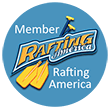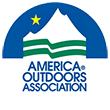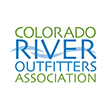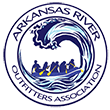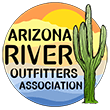Survival Tools to Keep on Hand
You don’t have to be out in the middle of the woods to keep a survival kit on you. On the other hand, it’s great to have a few tools on yourself without going overboard, just in case. While we can go into depth about to keep in a daypack or a go bag, we’re going to go the Hatchet route and cover the bare necessities here. These are the survival tools to keep with you with you wherever you go and you’ll wonder why you ever left home without them. Pocket Knife The classic pocket knife is definitely an essential multi-purpose tool. Of course, you can cut your apple at lunch with it but it also can be used for many forms of defense. A knife alone is better than nothing, especially if you aren’t familiar with defensive tactics. You can also use a knife to whittle down the end of a stick for a spear either to defend or to spear fish with if your aim and dexterity are good enough. When tied to the end of a stick, your pocket knife is a primitive bayonet minus the bullets. Aside from being a sharp weapon, knives come in handy for digging, harvesting food, cutting up fabric for bandages, hammering, as a screwdriver, a stake, and creating tinder. Also, you never know when you want to cut the price tag off a new shirt you got so you can wear it right away. Paracord A paracord bracelet may not be your style of choice, but for the utilitarian, its uses are endless. Although the paracord is a bit bulky, they tend to be 8-20 feet of rope that you can unravel. Use the finer pieces for many things like sewing torn clothing, repairing broken equipment, make a clothes line, use as floss, and create a trip wire. For larger pieces, use it to replace broken shoe strings, hang a bear bag, tie down items, or tie yourself to a friend when crossing rivers, caught in the snow, or traveling in the dark. While you can lower yourself with paracord, it is not a good replacement to climbing rope. You can save yourself though by using it to make a shelter, use as fishing wire, as a tourniquet, or to mark your path for efficiently than Hansel & Greta. Flint, Steel, & a Tuna Can Flint and steel come together in a small rectangle that is easy to keep anywhere like your keychain or bag. The tuna can though should have fire starting materials in it though like cotton balls, shredded paper, or wood shavings. There are two ways to use the tuna can, you can either make a small fire inside it or you can make a fire on the ground, collect water in your tuna can and boil it over the fire. Whether you’re lost in the woods or your car dies on the side of the road, you can be sure that you’ll have some heat and clean water if there’s a water source nearby. Water Staying hydrated is no laughing matter and unfortunately many people neglect water. Keeping a water bottle with you at all times is a good reminder to drink up and if you’re stuck in traffic, just ran a mile, or it’s just really, really hot out, you’ll be able to save your own sanity and will to live with every sip you have on hand. In other cases, water can be used to rinse out a cut, cool yourself down, or to wash off. At Wilderness Aware Rafting our passion is rafting. If you’re interested in a Colorado Rafting Trip, multi-day rafting trip, or want to try Salt River whitewater rafting, browse our white water rafting trips here.
River Rafting Levels in Colorado – INFOGRAPHIC
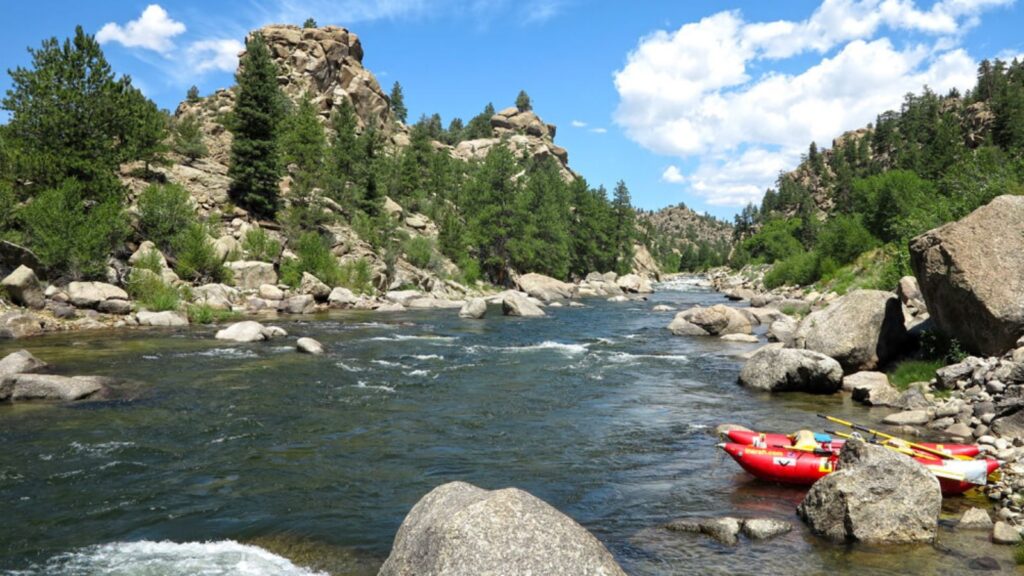
Carefully planning a whitewater rafting adventure is paramount to not only being safe, but also having a good time. Knowing what to expect on your rafting trip is key to making lasting memories while on the river. Similar to downhill skiing and rock climbing, river rafting uses a scale of difficulty to convey the skill level required to navigate sections of rivers. While a skier is aware that a black diamond run is steeper and is more difficult to ski down than a green or blue run, river guides and rafting enthusiasts are aware that rapids, like ski runs, vary in intensity. The scale to determine the intensity of rivers was developed by by the North Carolina-based nonprofit American Whitewater and is recognized globally by rafters, kayakers and conoeists alike. The classification system, or International Scale of Difficulty, ranges from Class 1 for beginners to Class 6 for the elite. River Classification System Class I: Easy. Mostly flat, slow moving water with the occasional small wave. Clear passages and no severe obstacles. Class II: Mild. Small rapids, low in difficulty with clear passages and a few minor obstacles. Class III: Moderate. Numerous, medium sized waves. Clear, narrow passages requiring maneuvering. Rapids with rocks, creating some severe obstacles. Class IV: Difficult. Rapids are long, with powerful waves and rocks creating potentially dangerous hazards. Precise maneuvering through narrow and/or rock-choked passages. Class V: Extreme. Difficult, long and violent rapids, close together in distance. Big, powerful drops, along a steep gradient through forceful currents. Pinpoint precision maneuvering through tight passages and around frequent severe obstacles. Class VI: Considered unrunnable! Do not attempt. Waterfalls and other unavoidable life-threatening hazards. While the scale isn’t exact, subjective factors such as skill level, season and river conditions at the time the river is paddled can influence the classification system. Before heading out on the river, knowing your comfort and skill level before embarking on your white water adventure will help ensure you and everyone else in your raft has a good time. Arkansas River Rapids Classes We are lucky in Colorado to have a handful of great rivers to raft on. Even better is the fact that the Arkansas River is rated as one of the Top 10 rivers in the US for white water rafting. Take a look at the infographic below for our favorite sections. At Wilderness Aware Rafting, we understand how a proper family rafting vacation can create some of the best memories a person can have. If you are interested in an Arkansas River rafting trip or want to try rafting the Salt River near Phoenix, AZ, please be sure to contact us and find out what white water rafting trips we have available.
5 Insane Facts About Dehydration
So, maybe you don’t drink as much water as you know you’re supposed to. But you aren’t dead yet, and that’s about as much as you’re concerned about. Likewise, every health article you could ever read says something about drinking more water, but the real facts about dehydration are rarely discussed. Turns out there’s a lot to know, and a lot that is misunderstood about staying properly hydrated! 1. 75% of Americans Are Chronically Dehydrated A recent study has shown that roughly three fourths of the country are suffering from constant dehydration, often unwittingly. This is often a result of popular eating and drinking habits, as well as the fact that man’s thirst reflex is often confused for hunger pangs instead. Soda pop, caffeine, sugar, salt, and starchy foods dry out the body and decrease its ability to absorb nutrients, leading to a variety of health complications that are common today. 2. A Portion of Your Water Intake Comes From Your Food While 80% of keeping hydrated requires drinking straight water, you get a surprising amount of hydration from the food you eat. Fruits and veggies are an abundant source of natural hydration, but even rice and dairy products can fuel you with some water. As long as they are not overdone, water-based caffeine beverages like coffee and tea actually do cancel out the drying-out properties and ultimately hydrate you. However, if your diet consists of too much sodium you won’t derive much hydration from your food at all. 3. “8 Glasses of Water per Day” Rule is a Myth It has become the widespread rumor that every person must drink at least eight glasses of water a day to stay hydrated. But considering the amount of water one gets from their diet, as well as the fact that every person is unique, this is obviously not an accurate standard. The Institute of Medicine has narrowed it down, stating that men generally need about 3.7 liters a day where women need about 2.7. Of course this varies from person to person depending on what their diet consists of, their weight, and many other medical factors. It’s important to find your individual water requirements rather than go off a number tailored to someone else. 4. Clear Urine is Not the Goal You may have been taught to try to achieve urine that’s as clear as the water you’re chugging down. But urine this clear is a sign that your body is just passing the water straight through, and you aren’t giving it enough time to flush out any excess minerals along with it. A sign of a healthy and properly-hydrated person is a pale yellow color to their urine. Adjust your water intake accordingly by analyzing your urine and aiming for that color consistently. 5. It Only Take 45 Minutes to Get Hydrated The Journal of Strength and Conditioning Research conducted a study on how long it took mildly dehydrated men to become hydrated after drinking water. It was found that after consuming around two bottles of water, it only took roughly 45 minutes for the body to function healthily in a perfectly hydrated state. If you sense that you are dehydrated (or have been chronically dehydrated for some time), it’s not too late for you! Drinking some water now will help you get your body back to a more functional state in under an hour. While there’s plenty you can do to recover from mild dehydration, serious dehydration is no laughing matter. If symptoms have increased in severity to the point where someone is vomiting, cramping up, majorly disoriented, or unconscious, you’ll need to seek emergency assistance. There are many a walk-in clinic in Medford, MA and other major cities that are equipped to handle these cases, and at that point you shouldn’t rely on at-home measures. By understanding dehydration and what it takes to maintain proper hydration, you can avoid these kind of situations and live a longer, healthier life! At Wilderness Aware Rafting, our utmost passion is being the best river rafting guides we can be. This ensures we offer the best service to our customers year after year. If you’re interested in a Browns Canyon white water rafting trip, Dolores River rafting trip, or want to try Salt River rafting Arizona, please be sure to contact us and find out what trip offerings we have available. We look forward to seeing you on the water!
5 Must Haves For Outdoor Enthusiasts
The great outdoors gives people a chance to enjoy nature and wildlife. Particularly as people grow older, they appreciate more the serenity and peace that being around nature provides. Whether someone is hiking or going on a camping trip, they will be able to immerse themselves in a world different from the manmade one that they live in most of the time. But outdoor enthusiasts also need to come prepared for the great outdoors, because they often have to deal with less than hospitable terrain. So here are five must-haves that an outdoor enthusiast should have. One: A Portable Shade Canvas Even the most ardent outdoor enthusiast will need a break from the sun, and may also want to enjoy a meal under the shade. Bringing a portable shade canvas on a camping excursion makes this all the more possible. Lightweight and easy to transport, portable shade canvases can be quickly set up to provide a much needed respite from a hot sun. Being under the sun too long isn’t just about discomfort either, sometimes people can have serious heat strokes when staying in the sun too long, and a shade canvas can give an outdoor enthusiast temporary shade and protection. Two: Hiking Boots Another must have for outdoor enthusiasts is a durable and high-quality pair of hiking boots. This is particularly important for people who are serious hikers, and travel through rough terrain. To avoid injury having a pair of reliable hiking boots will go a long way towards navigating through a forest or park. Three: Jerky Jerky is a dried meat that is perfect food for outdoor enthusiasts. It’s lightweight, easy to transport, and basically non-perishable. Jerky is easy to store in ziplock bags to take as a snack anywhere someone wants to go with no mess. Jerky comes in a variety of flavors such as teriyaki, and can either be made with turkey or beef. Found at pretty much any gas station around the world, jerky is a typical and convenient hiking food. Four: Lightweight Backpack Having a durable and high-quality lightweight backpack is essential to any outdoor excursion. It will be needed to store the basic essentials someone will need, particularly if they are planning on going on an extended hike or camping trip. The backpack will have to be lightweight, so that it will be as easy as possible to carry water and other items that may be needed in the outdoors, such as bug repellant to keep the outing as enjoyable as possible. Five: First Aid Kit A portable first aid kid is absolutely essential for every outdoor enthusiast to have. Accidents always seem to happen when least expected, and they easily can happen when trying to navigate tricky terrain. First aid kits are especially important to have when someone gets hurt far away from the nearest doctor’s office or hospital. Prompt treatment can help an injured person until he is able to get professional medical care. Enjoying the great outdoors is a wonderful way to reconnect with the natural world, and many people love spending time with nature and wild life. By being prepared, outdoor enthusiasts will have an even better time enjoying the outdoors. At Wilderness Aware Rafting our passion is truly rafting. If you’re interested in a Colorado Rafting Trip, multi-day rafting trip, or want to try whitewater rafting on the Salt River in Arizona, please be sure to contact us and find out what trip offerings we have available. Burt Thompson is an outdoorsman who enjoys hiking, camping and fishing in his time off from work. He works for Quik Shade designing products.
Various River Terms for Whitewater Rafting
Rivers usually originate from a freshwater source that flows downwards from a higher elevation like atop a mountain towards one or more rivers, which then leads into a lake, a sea, or an ocean. In Colorado, we have four major rivers: Colorado, Rio Grande, Arkansas, and South Platte. Many small streams and rivers feed into these major rivers, giving us some of the best options in the US for whitewater rafting in Colorado. Some of our exciting whitewater rafting trips at Wilderness Aware Rafting take place on the incredible Arkansas and Colorado River. As you’re navigating downriver during one of our trips, you may wonder how to refer to specific areas along the river. Well, you’re in luck! This is a handy guide to river terms so start studying so you can look like quite the river stud (or studdess) next time you jump into a raft. Whitewater Rafting River Terms Confluence – the point where two rivers meet Dam – a man-made barrier built to hold back water in a reservoir or divert the flow of water Downstream – the direction that the river is flowing Drainage Basin – the area of land where surface water from rain, snow, and ice is drained by river at a lower elevation Eddy – spot where the water headed downstream stops or reverses, usually resulting in a spot to get stuck Estuary – where the tide of an ocean meets the current of the river and mixes, usually at the mouth of a river Flood Plain – the flat land close to the river banks, which is very fertile and often used for agriculture Flooding – when the rivers are overflowing with water and spreads over the bank and surrounding land Rapids – the wavy areas of a river where the current is moving fast and breaks against rocks near the surface Riverbed – the ground at the bottom of the river, which is usually sand and stones The Mouth – the end of the river where it meets a large body of water like a lake or ocean Waterfall – the sudden drop off of a river over a cliff Watershed – the land that drains water into a river or other body of water At Wilderness Aware Rafting, we absolutely love being on the rivers and having a better understanding of their nature and how they work with, well, the rest of nature. Sharing the knowledge and experience with you is an amazing benefit of our jobs. If you are interested in a Colorado Rafting Trip, multi-day rafting trip, or want to try Salt River whitewater rafting in Arizona, please be sure to contact us and find out what trip offerings we have available.
What Every Rafting Survival Kit Should Contain
Items Everyone Should Have In Their Rafting Survival Kit Most people understand that it’s better to be safe than sorry. Preparedness doesn’t just happen by chance alone, and a bit of foresight and planning must go into making any precautionary measures. This is especially true when deciding on what your rafting survival kit should contain. You don’t have to think that by making one you are expecting the worst to happen, just that if it was to, you would be ready. If you are planning a rafting adventure of your own this summer, be sure to go over this list and ensure that you have the contents with you in a dry bag, one that can be lashed to the raft itself. One other note is that this survival kit is big and can be because the raft will be carrying it until it is needed. Most survival kits for other situations would be much smaller as you would be forced to carry it, but since that is not the case here, it’s best to bring anything that could be needed and sift through it when the time comes. With that said, let’s go over this list and explain what the items are needed for. Necessary Rafting Survival Kit Contents Bandana: A bandana is an all around great item to have on you. Can be used to shield your head from the sun, wrap up cuts or abrasions, kept wet and wrapped around your neck to stay cool, or any other number of purposes. Try to have at least one, but two or three could never hurt. Belt Knife: A belt knife is one that should stay on your person at all times, and is kept on your belt so as not to fall out of your pocket. It is also easily accessible in case you need it in the moment. For instance, in the event you are tossed out of the raft and managed to get wrapped up in cords underwater, the knife can be used to cut yourself free. Beyond that, a knife is one of the most crucial items to have as its overall versatility and potential uses are endless. Bug Netting: When in a survival situation, any annoyance is going to be heightened and made worse. For most people, bugs make the top of the list for annoyances outdoors. A proper bug net will shield you from these pesky critters at time when your nerves are already going to be shot. Candle: If you can help avoid sitting in the dark, you will surely be happier. They are also useful for keeping a flame going in case you dont have much dry material around you to use. Metal Cup: Your going to want something to boil water in, and a metal cup is the best option for that without having to carry bulky pots. Hot water will raise your spirits if your cold, as well as your body temperature. You can also steep pine needles and other edible plants to receive a few extra vitamins and calories. Boiled water is also one of the best ways to kill bacteria in water that would otherwise make you sick. Dried Food: Dried food is good for a long time as it doesn’t spoil, and for that purpose is perfect to take in a survival kit of any sort. Duct Tape: If anything in the world breaks, it can be fixed, fastened, or wrapped up in duct tape. Its uses are endless, and you should always have some of it with you. Fire-Starting Device: Magnesium strips and flint, friction starters, or anything really is better than nothing. Even a basic lighter will make you extremely happy when you want to start a fire. Tinder: Tinder of any sort is extremely useful when everything around you is damp or wet. It will be needed to start the base of a fire so that a larger one can be built up on top of that. Even picking up things along the way as you find them is a useful habit to get into. Dry wood chips, moss, pine needles, and the like will all do the trick. First Aid Kit: Should be pretty self-explanatory. An entire article could be devoted to this item alone, and as such, you should research what is best needed for a first aid kit, as often times, they are dictated by the region and climate you will be in. Fishing Equipment: Anything helps when trying to scavenge for and find food. Fishing lines, hooks, lures, and lead weights will all come in handy. The pole itself is not necessary, and if truly wanted, could be fashioned in the field. Flares: No better way to signal for help in the night. Best used if you know a party is nearby or that you hear a plane or helicopter overhead. Flashlight: Again, no one likes being beholden to the dark. Can also be used to flag down emergency responders at night. Wire Saw: Folding saws, hatchets, and any other number of sawing instruments would work. But mainly these are needed for either making shelter, or some other form of device such as a hauling sled or raft. A wire saw though is lightweight, flexible, and gets the same job done in the end without having to worry over carrying a sharp saw in your otherwise waterproof bag. Orange Garbage Bags: Bright colors are best in daytime for allowing emergency personnel the best chance to spot you. You can tied one to the top of a stick and carry that around as you walk as a sort of flag. Garbage bags themselves also have a great number of other uses that make them worthy of being included in this list. GPS Unit: A functioning GPS will be your best friend for telling you exactly how lost you are. It will tell you where you need to go, as well as geographical formations to avoid, such as steep mountains, or sheer ravines. Makes trekking out yourself quite a bit easier. Map & Compass: If you don’t have a GPS, or the one you had has failed you, it’s time to rely on what
Meet Zack – Wilderness Aware Rafting Guide
My name is Zack Wright, but most people call me Cookie. This is my 5th year guiding for Wilderness Aware Rafting, in Buena Vista. My favorite section of river on the Arkansas is the Numbers because it is continuous, exciting hot action. I think that it is the perfect half day trip. I actually grew up on the Arkansas…a thousand miles downstream in Broken Arrow, Oklahoma. It’s much different down there and about a half mile wide. I first went fishing in a little john boat on the Ark when I was about 10 years old. I came to the upper Arkansas Valley in 2009, just a few days after I got out of the Marine Corps. I was in the Marines as an infantryman from 2005 to 2009 and deployed twice to Iraq (16 months) and once to India (2 months). I was looking for a job that could hold me over for the summer before I started classes in Oklahoma and after a long and less than fruitful search, I found my dream job! I was going to become a white water rafting guide in Colorado. Did it matter that I had never even been rafting before? Not in my mind. I packed up and moved to Buena Vista! Working for Wilderness Aware has been a great experience. It has helped to fund my way through College and was an important step in my life as it gave me employment as I transitioned out of the Marine Corps. The opportunity to receive excellent and continuous training at WA has been a key reason for coming back year after year. WA also takes us on several staff trips a year to different rivers around Colorado and even into Wyoming and Utah. I look forward to working for WA in the future and my goal is to finally work a season for WA on the Salt River in Arizona this year. Position and Company: Trip Leader, Class V Guide, Multi-Day Guide, Inn to Inn Guide Wilderness Aware Rafting Number of years working on the Arkansas River: Four (2009-2012) and more to come! What do you do the rest of the year? I came to the Ark straight out of my 4 years in the US Marine Corps. The summer before the Ark I was on my 2nd deployment to Iraq. I conducted my interviews with WA while deployed to India at the beginning of 2009. I am a student at Oklahoma State University, where I also guide kayaking, climbing, and backpacking trips for the school. I’ve also worked for a commercial lighting company, UPS, and the Tulsa Zoo between seasons on the Arkansas. If I wasn’t a raft guide, then I would be (doing what)? I am a Secondary Education Major. This year I finished my student teaching at Department of Defense Schools at a US Air Force base in the United Kingdom teaching 8th Grade US History. I plan on working one or two wet years and then settling into a teaching job in Oklahoma! What does a typical day look like? A perfect day on the Ark would be to wake up in Cottonwood Camp (River Left above Pinnacle Rock) on the fifth day of a five day trip. I would rustle up a delicious breakfast of Eggs, Bacon, and Coffee, and serve it to my crew to start the day. We would pull into Pinnacle Rock put-in to meet with our safety boater, de-rig the gear boat, and get ready for a solid day in the Parkdale-Gorge section. Parkdale would serve as our final warm-up before the mean Class IV-V Royal Gorge rapids yet to come. We would eat lunch on the sunny River Left Brown’s Landing put in. Day 5 lunch of a Five Day Trip has the added bonus of all the eatable leftovers from the entire trip being added to the meal in addition to the planned menu. We need all the nourishment we can get before descending into the canyon. No matter how many times I guide Sunshine and Sledgehammer, I still get nervous and excited. There is always an enormous thrill of crushing through Sunshine Hole or Bird Drop with a bomber crew. A day in the Royal Gorge, rain or shine, is a good day to me. The Gorge also serves as a perfect capstone for the last section of our Five Day Expedition. By now, the crew and guides know each other well and work together as a finely practiced team. After returning to BV, de-rigging all the boats, wetsuits, paddles, helmets, PFDs, stoves, ice chests, trailers, vans, rocket boxes, tables, fire-pans, tents, sleeping bags, commissary boxes, and groovers, its finally time to head home. There are always a couple of guys trying to recruit a raft or kayak mission up to the Numbers or Pine Creek, and I have a bad habit of never being able to resist. At this point I re-dawn my river gear and join the crew to kayak a Clear Creek to #Five run. Back at home, there’s always time to celebrate a great day on the river with a couple of beers with guides from all the different companies at the Eddyline or the Rope. The best part about going to bed at night though, is that I get to wake up the next day and tackle another section of river! Where do you sleep? Wilderness Aware provides housing in a mobile home park. Everyone in our company lives there, so something is always going on with good friends. I love it! Most Unusual Request Ever Made of You or another guide? I once had a 350 pound man named “Tiny” as a guest on a multi-day trip. He was badly sunburned and asked me to rub aloe on his enormous back. It was so hairy that you could’ve combed it or shaved it into a Mohawk. This incident still haunts me. What do you enjoy the most about being a raft guide
Reading Rapid Features Whilst Rafting
If you were hoping to do some white water rafting in Colorado with the remaining days left in the summer, it is of course important to have an understanding of any river prior to making an attempt at white river rafting. It is also important to pull off and scout ahead before an expected decent into a series of rapids occur. These two precautions alone can work wonders, keep you dry and out of the water, and ensure that you remain safe. But there is one skill that can be learned through experience only, and that is the reading of river rapid features. This skills will certainly help when scouting ahead, but if rafting were chess, scouting would be considered the strategy, where you design a plan ahead of time and act with that in mind. Once you are in the river, if anything unexpected occurs, having to avoid it would be considered a tactic. Which is an in the moment plan of action. A proper ability to read rapid features as you’re rafting is an important skill which can keep you safe, dry and happy. So without further ado, let us describe some of the more basic features that can be noted upon a whitewater rafting trip. Visible Rocks: If you intend on doing some Colorado rafting, you better assume there are going to be some rocks in the river. Most experienced rafters understand that rocks generally do not pose a large or significant threat. They are more than often easily spotted and avoided. Generally, if they are hit, there is little to no damage to the raft. There are really only two things that you should have to worry about if collision occurs. One is if you become beached atop the rock or against it. This is a problem as removing a heavy raft from atop a rock amidst a raging river is no easy task. The other is if by hitting the rock you are spun about, and unable to head nose forward down the river. You dont want to enter a series of rapids heading either rear first, or especially sideways. The latter is a sure way to flip your raft over. One important clue that a rock can give is indicate the direction a current is heading. This can be noticed by seeing which way the water is deflecting off of the rock. This is important especially when heading through narrow areas, as you’ll want to use the current to avoid certain obstacles and hazards. Chutes: Chutes are the parts of a river where the water is smooth and flowing through a channel and is recognized by a V-shaped ripple that points downstream. This indicates a good and safe course and should be taken when noticed. If you notice a V-shaped ripple pointing upstream towards you, this is not a chute, rather it is a rock or obstacle under the water and should avoided. It is important to try and notice the direction a V-shaped ripple is heading as that can save your raft from a potential disaster. Eddies: Eddies are an interesting feature in any river, which results from the water seething to fill the void left behind by a rock or other obstacle. Depending on the size, eddies are often very calm and the water can even appear to be standing still. These provide great resting spots, especially for a rest or to scout the next rapid ahead. Holes: Holes are perhaps the most dangerous of all river features, they are often also referred to as ledge holes, souse holes, waves, stoppers, reversals, keepers, and pour-overs. Submerged and other large objects that are submerged can be recognized by either the smooth dome of water that is created cascading over the op, or the turbulent water created by deeper and larger rocks downstream. The waves or turbulence created are called hydraulics. There are many different types of hydraulics created which depend upon the rivers gradient, amount of water, and the dimensions of the rock The dangerous parts to holes are the back-waves that are created. Back-waves are created by the water traveling back in on itself in these holes. In larger holes, or ledges in some cases, the back-wave can be very powerful and difficult to escape. These can be very difficult to escape, and should be avoided when possible. What end up happening is you will become stuck in a single spot where the water is churning and attempting to essentially swallow the raft. Holes are very easy to flip your raft it, which is why caution is advised. Hazards: Any obstacle in the water should be considered hazardous and avoided if at all possible. No matter what the obstruction is, there is no need to risk the life of the raft, in case of a tear, or the potential life of a passenger in case they fell out and became entangled. You would be surprised at how slow a little bit of water needs to travel to trap you against an object. It’s not much, and once you’re pinned, theres very little that can be done to loosen yourself. Even overhanging hazards, which normally wouldn’t present a problem can be dangerous. Tree branches are notorious for knocking people into the water, knocking sunglasses off, and jabbing at people. The most dangerous part is perhaps the potential for a branch to scratch or stab a person in the eye. They also just generally hurt to go through, and it’s hard to escape unscathed without at least a few cuts and scrapes. If you are interested in perhaps doing some salt river rafting down the great Arkansas River, or perhaps go whitewater rafting in Colorado, than please visit Wilderness Aware Rafting to see what trips are still available this season.
The International River Grading System: How To Know A Rivers Rating
Colorado river rafting can be hazardous at times and should not be taken lightly. But it can also be as harmless as a whimsical lazy river. It all depends on the ranking of the river, and more importantly, the ranking of certain rapids. Rafting the Royal Gorge for example, can have very mellow sections when little attention has to be paid. But around a corner there can be an explosive series of rapids where only the most skilled guides should be making an attempt at it. Just as a snowflake, no two rivers are the same. Each is unique and has it’s own individual dynamic, which makes it like no other on earth. These rivers even change over time, so no river is the same as it has been, it gradually changes year after year. This means that every new attempt at a river should require new scouting to ensure it’s known which obstacles to avoid and which routes to take. The actual act of rafting is only part of the fun, figuring out a course and navigating is enjoyable in it’s own right. Especially when you make the right calls and decisions safely guiding your raft down the rapids. The first thing that should be done prior to actually rafting, is seeing what previous rafters have said about the river. We wouldn’t have the majority of the things we have in this world if we couldn’t build off the success of others before us. With that said, a system has been developed which allows rafters to let other rafters know what they think about certain rivers. This system is known as The International River Grading System. The International River Grading System Grade I: Easy Rivers that are flat with slow moving water and the occasional small or simple rapid. Any waves present are low, with obstacles being obvious and easy to maneuver around. There is no technical training required to raft these rivers. Grade II: Novice Rivers that frequently have rapids which are moderately sized with small and simple waves and eddies. Scouting is unnecessary as the river will be moving slow enough to avoid any obstacles that arise. Little training is required, mainly just understanding how to maneuver a raft. Grade III: Intermediate For a rafter with some training and proficiency, these rivers are easily navigated. There will be a few routes that must be run correctly to avoid major obstacles and obstructions. There will be a number of rapids that have abnormal and irregular waves. There may even be a series of steps with a steep gradient that must be done. For the less experienced rafters, viewing a route from the saftey of the bank is advised. Grade IV: Advanced These rivers are considered to be very challenging, with long stretches of rapids with irregular waves. The courses to take on these rivers will complicated and various obstacles and obstructions may be hidden and unseen underneath the waves. These rivers will also have waterfalls ranging up to 3 meters in height. There can be narrow and steep channels that are difficult to navigate. Regardless of the experience of the rafter, you will want to scout ahead to mark your path. These rivers require a group to be skilled enough to make a rescue if need be. Grade V: Expert These rivers have all the same issues as grade IV does, however it is going to be more extreme. Meaning the waves are larger, drops steeper, and rapids more violent and less predictable. The routes to take for these are extremely difficult to manage, even when the exact course is known. There is a greater amount of risk involved in rafting these rivers. Grade VI: Unraftable Some consider rafting on a class VI river suicidal, and only extreme luck or skill will allow you through) Hopefully this guide has helped to explain the differences in river difficulties. Always be sure before you raft on a whitewater river that you understand what you are getting into. Before taking on stretches of river, always scout ahead to make sure you know what course to take. Even if you’ve done the river countless times before, new obstacles could have been created which weren’t there the time before. If you would care to perhaps do some Colorado rafting yourself, you should contact the people at Wilderness Aware Rafting to see what trip options are available this season.
What to Wear White Water Rafting
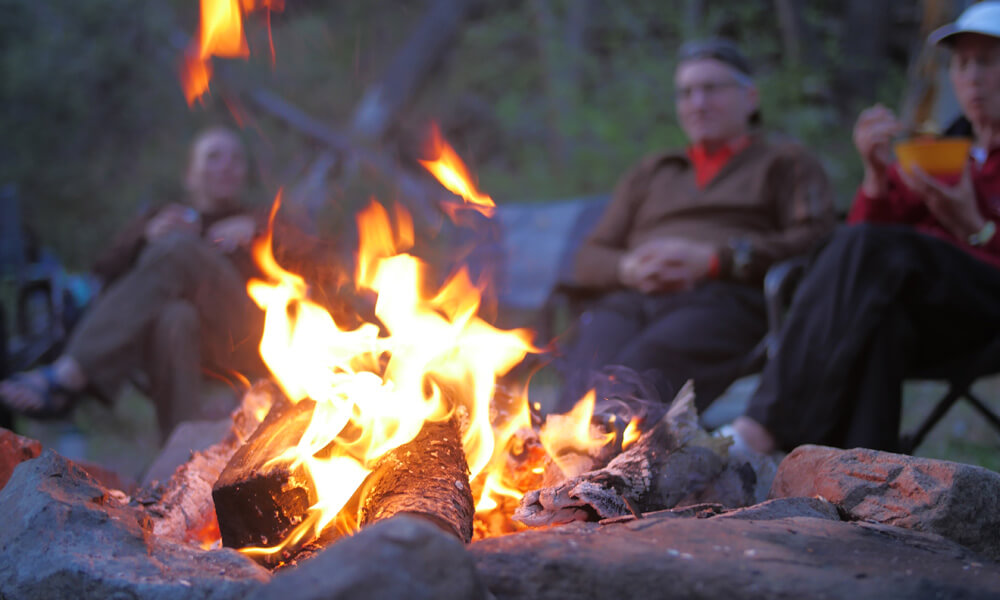
Clothing Items To Be Brought On A Multi-Day Rafting Trip It doesn’t matter what endeavor is being undertaken, the proper clothing can make unpleasant conditions bearable, while having improper clothing can even make pleasant conditions nightmarish. Bellow is going to be a short list of the absolutely necessary clothing items that should be taken when going on a multi-day rafting trip. Shoes Most people might think that when you’re going rafting, you’re not going to need any shoes at all considering you will sitting in a raft all day. If that was the case, then yes, the no shoe rule would apply. However, that is probably not the case in 99% of instances. You will want shoes for when you are both boarding and exiting the raft, as many times you will have to walk across rocks. Also, if you are ejected from the raft while going through rapids, having shoes on will help to protect your feet from rocks and debris you will be passing over. Ideally you would want a water shoe, but if you do not have that, sandals with straps will suffice. You can also wear sneakers, you just want to make sure the shoes you wear are not heavy in themselves, and can allow water to escape. Shirts It is critical to keep yourself covered while whitewater rafting as you will most likely be exposed to the sun the most of the time you are on the river. Being exposed to the sun for that long can cause sun stroke, heat stroke, sun burns, and dehydration. Also, the river water will reflect much of the sunlight that wouldn’t have hit you, so you are receiving much more sun than is normal. You will want to pack shirts that dry easily, which means they shouldn’t be cotton. But rather, polyester or nylon. Anything that wicks easily will be useful, you may think having a shirt thats wet will keep you cool, which is true. But come nightfall, if your shirts cannot dry, you’re gonna be cold. Pants/Shorts It is probably wise to cover your lower half equally as much as your upper. But considering it will be more difficult for the sun to reach your lower half when you’re sitting, you can probably get away with wearing shorts over pants. Though, you will want to be aware of the weather conditions that will be present. If it’s going to be cooler, you may want to wear pants. You will want to wear shorts/pants that dry quickly as you will not want them to remain wet come nightfall. If the weather is cooler, it will also be better during the day if your pants are dry to keep your body warmth up. You will want to avoid cotton for this reason, and stick with a canvas type or polyester. Eye Wear You will be very happy if you remember to bring your sunglasses whilst river rafting Colorado as the water will be reflecting the light into your face no matter which way you turn. It will also keep the water from splashing into your eyes, which will help to keep you focused on paddling. You are going to be in direct sunlight most of the time, so unless you don’t care to be squinting the entire day, you would be wise to remember your sun glasses. Hopefully this will help to show that you cant roll out to go rafting a Colorado river in whatever you woke up in. It is essential to wear clothes that dry quickly, and cover your upper body well enough to avoid as much direct sunlight as possible. The clothes that have been described are solely for the rafting bit of a trip. You will want warmer clothes to wear come nightfall as your body will be chilled from rafting all day. So fleece pants and a sweater will make you very happy when you are trying to warm up and enjoy the evening. Colorado River rafting and white water rafting the Arkansas river present a unique problem. You are going to be hot during the day but cannot be exposed to the sun, you will want the water to cool you off, but you’ll need to dry out. So if these issued can be addressed and handled prior to beginning the trip, you will have a much more pleasant time overall.
